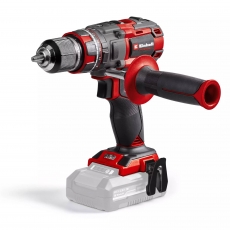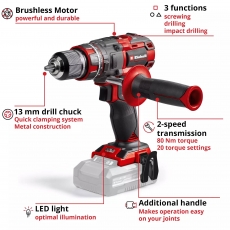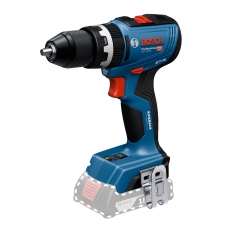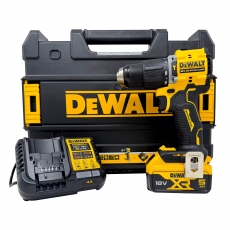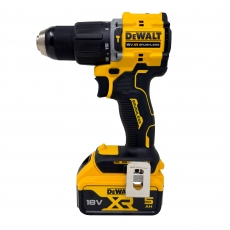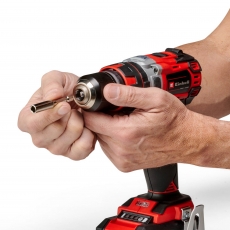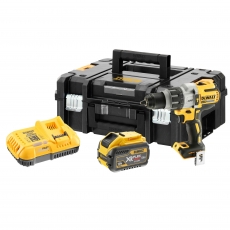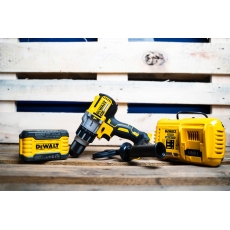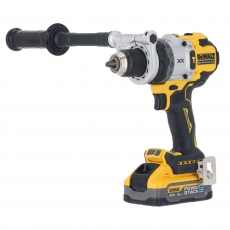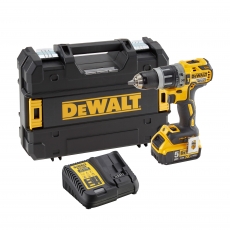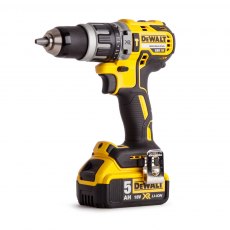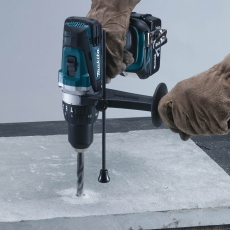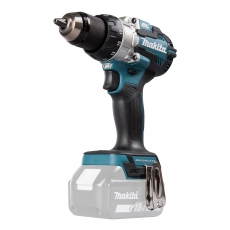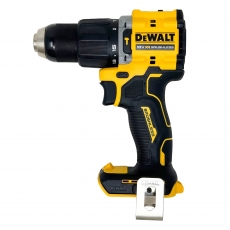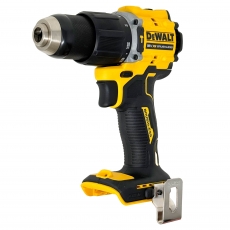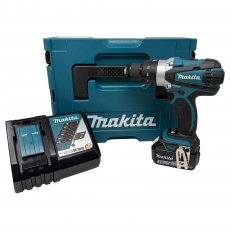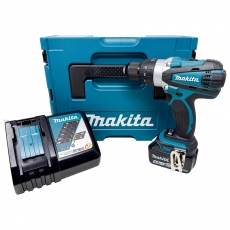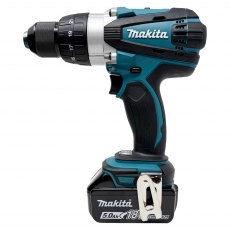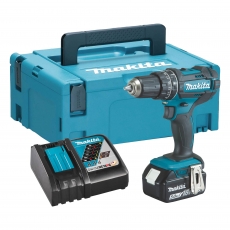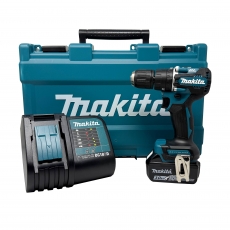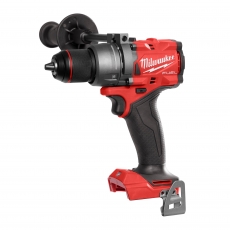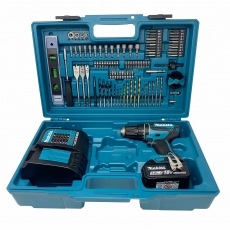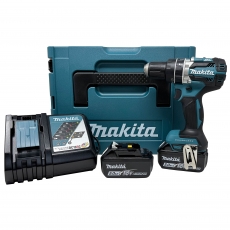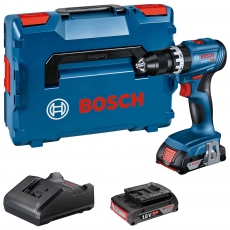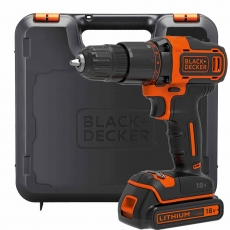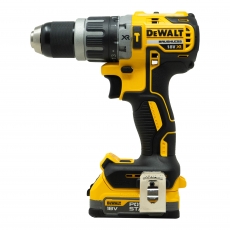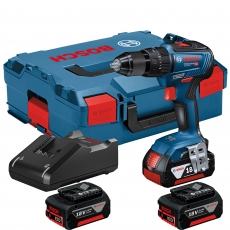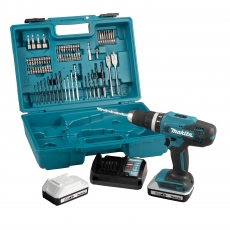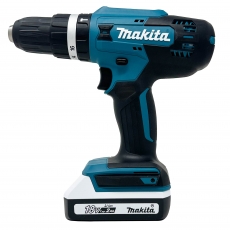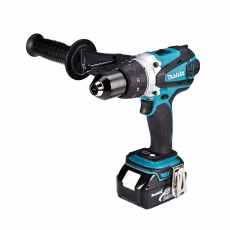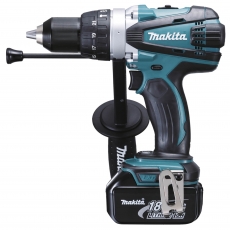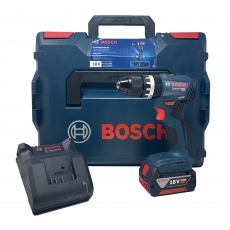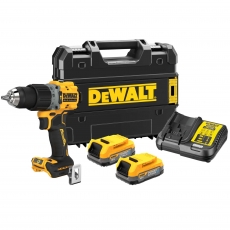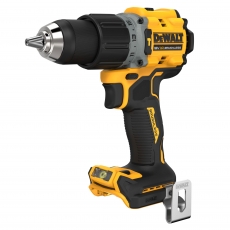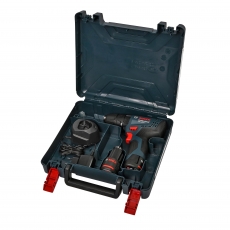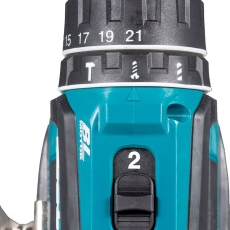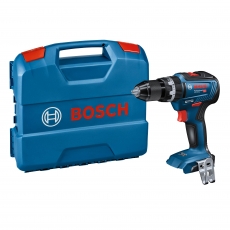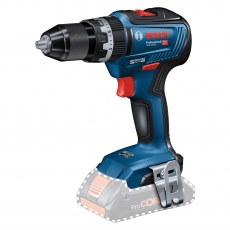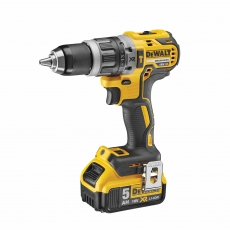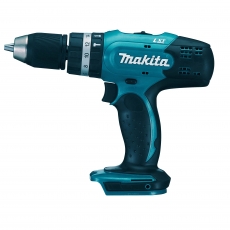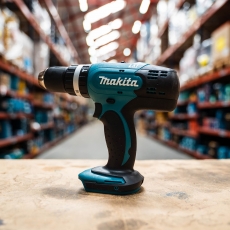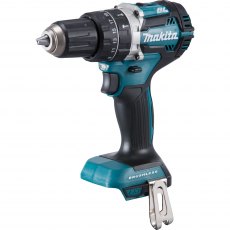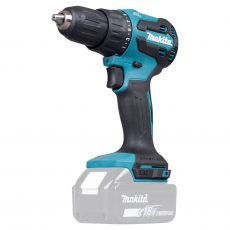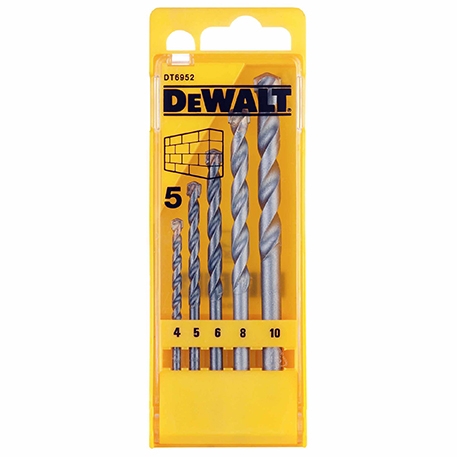Currently Out Of Stock
Cordless Combi Drills
A cordless combi drill allows you to remain mobile and ready for a range of tasks, whether you’re doing DIY at home or working on a major construction project. With the correct accessory, you’ll be able to complete a variety of tasks without having to switch between tools such as drilling, driving screws, boring holes into wood, metal or masonry and many more essential tasks. What’s more, the combi drill’s rechargeable battery allows you complete freedom to move around your home or the jobsite without being limited to the length of a power cord.
You’ll find single combi drills and complete combi drill sets right here, in a range of voltages and battery capacities. A higher voltage will give you more power and torque and a higher Ah number will give you a longer runtime. Lookout for special cordless drill deals on the brands you know and trust like Bosch, Makita and DeWalt and order before 4pm for next day delivery.
Want to learn more about looking after your cordless drill? Read our helpful guide on cordless drill maintenance today!
Looking for more combi drills? View the range from Makita, Bosch, Trend and DeWalt at ToolStore UK today. You can also read our step-by-step guide on how to use a combi drill here.
Frequently Asked Questions
What are the benefits of a combi drill?
Run entirely by battery power, combi drills are advantageous for many reasons:
Portability
As long as there is charge in your battery, your cordless drill can be used anywhere. You aren’t limited to drilling only where a power source is available or dealing with the hassle of extension leads. This makes them ideal for use all around the home or the jobsite, as well as hard-to-reach drilling jobs where a power lead would just get in the way.
Rechargeable batteries
Simply plug your battery into the charger after use or at the end of the day and allow it to recharge for a few hours. Find out more about how to take care of your cordless power drill batteries with this helpful guide.
Power
Compared to cordless screwdrivers, cordless combi drills offer greater power and torque at much higher speeds. Combi drills also have a hammer drill setting (usually indicated with a small hammer icon) that can be selected when you need a little extra umph for drilling into masonry. In this setting the drill bit is hammered many times a second as it rotates, enabling the drill to bore efficiently into brick and blockwork.
Torque control
Being able to control the torque (turning force) while drilling allows you to drive screws to the correct depth, helping to prevent damage to the screw head or the material that you are drilling into.
What different types of drill are there?
Using the correct drill can save you a lot of time, work and frustration! There are many different types of drills, but they can all be categorised into three primary types — traditional drills, impact drivers and hammer drills.
Compared to cordless screwdrivers, cordless combi drills offer greater power and torque at much higher speeds. Combi drills also have a hammer drill setting (usually indicated with a small hammer icon) that can be selected when you need a little extra umph for drilling into masonry. In this setting the drill bit is hammered many times a second as it rotates, enabling the drill to bore efficiently into brick and blockwork.
Traditional drills
Ideal for basic projects, a traditional drill may be all that you need. They drill holes and screws into wood and drywall, although they do have their limitations in power. If you’re planning on doing some heavy-duty drilling, you may need something with a little more oomph.
Impact drivers
Impact drivers are designed for heavier work. Just like a regular drill, the driver rotates. But, when it meets resistance, an impact driver will increase the force being delivered perpendicular to the bit. A heavy-duty spring inside the impact driver body is compressed every half turn, then releases to deliver tremendous force. The energy goes in the same direction as the chuck rotation, not in a straight line along the drill bit like you would see in a hammer drill. They are therefore ideal for tasks like driving screws and other fasteners, where powerful rotational energy is required.
Hammer drills
A hammer drill is the same as a combi drill. It offers you three modes: drilling, driving, and drilling with hammer action. The hammer function provides a hammering action to the chuck, punching the bit backwards and forwards into the material being drilled. This makes it highly effective for drilling into brick, concrete and masonry.
What should I look for when buying a combi drill?
Combi drills are very versatile tools, suitable for drilling and driving into wood, brick, concrete and steel. These great all-rounders feature a combination of driver, hammer and impact settings that allow them to tackle most jobs. They are a staple of most tradespeople’s toolboxes and a perfect tool to have at home for DIY projects.
Combi drills have three main functions:
- Drive screws
- Drill holes into wood and metal
- Drill holes into masonry with the hammer function
There are several functions and features to look out for when choosing a combi drill.
Speed
A combi drill will usually offer at least two, but sometimes three speeds. Higher speeds are best for drilling into harder materials such as stone or metal, while lower speeds are better and more precise for screwing screws into softer materials, such as wood. The speed of a drill is usually shown as RPMs (revolutions per minute) and is referred to in our product specifications as ‘no-load speed’. This is the maximum speed of the drill when it is not drilling or screwing into anything.
Torque
Torque is the rotational force or energy that turns an object and is measured in Newton metres (Nm). Most cordless combi drills offer torque control, sometimes referred to as variable clutch setting, that allows you to adjust the torque depending on the material you are drilling into. This helps prevent damage, that can be caused from too much power, and improves accuracy. Torque control is also useful when carrying out more delicate work or when working with softer materials like wood.
Type of chuck
The chuck holds the drill bit in place and is usually made up three jaws that tighten around the bit, automatically centering the drill bit into position. Some chucks are ‘keyless’, which means you can change the chuck without a tool or key. Cordless combi drills may have different chuck capacities; that is, the size of the drill bit the shaft of the drill can hold. You’ll need bigger drill bits for heavier duty tasks so check out the chuck capacity to ensure it will fit the drill bits you intend to use. The most common chuck sizes are 10mm (which will probably be sufficient for most home DIY projects) and 13mm (for more heavy-duty tasks).
Looking for a combi drill? Read up on our guide to the best cordless power drills available on the ToolStore UK website today.
Recently Viewed







